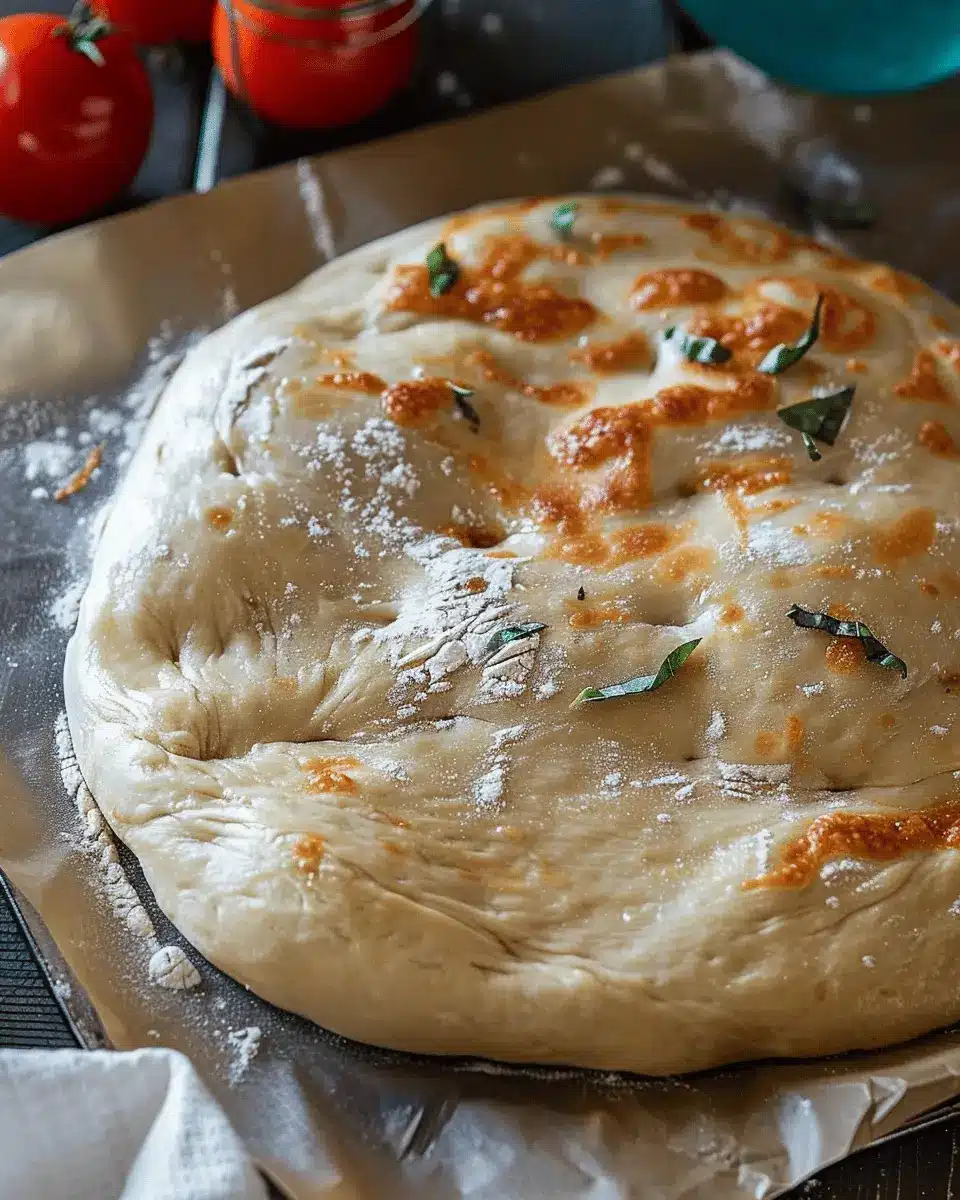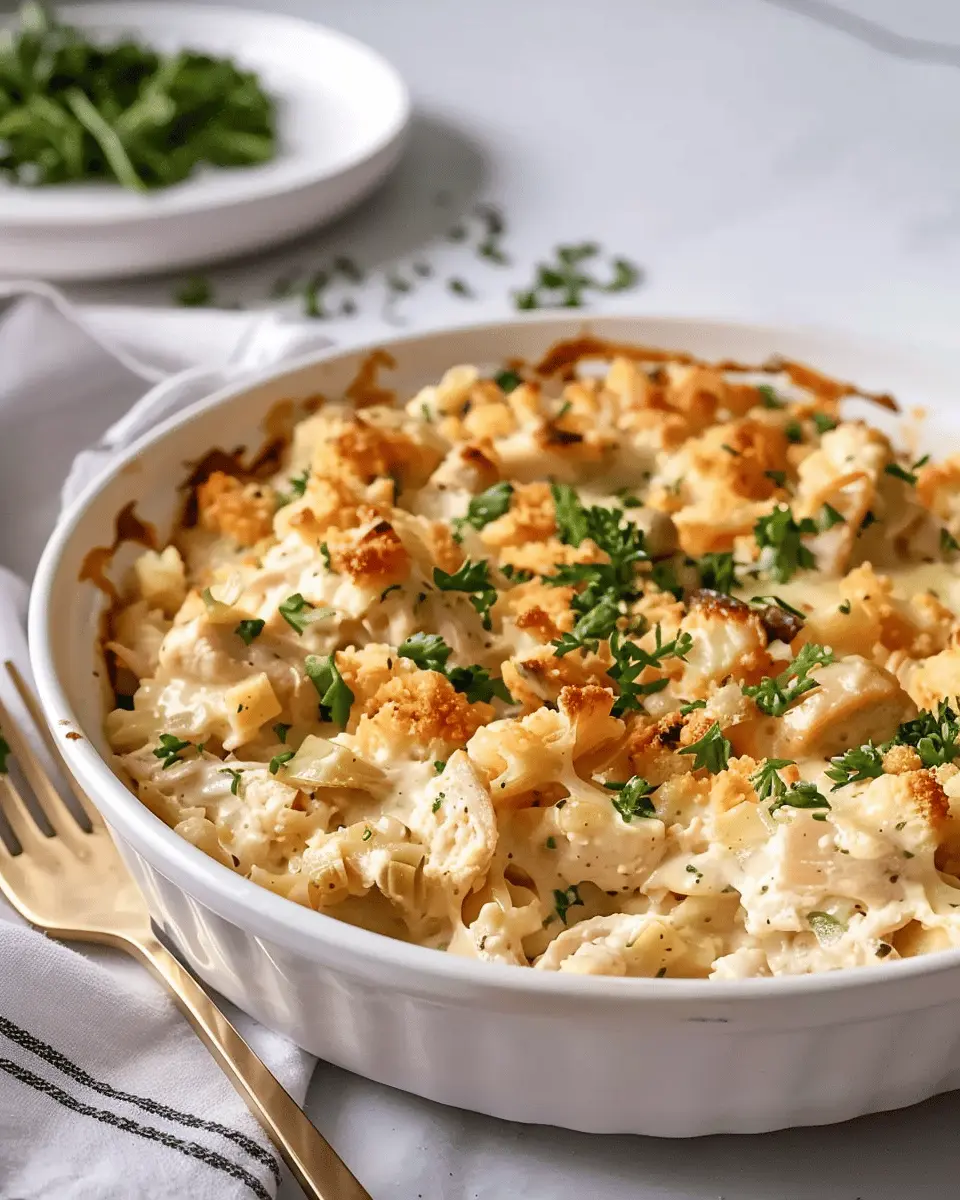Introduction to Homemade Pizza Dough
Making your own homemade pizza dough is not just a culinary task; it’s an experience that transforms a simple meal into a delightful occasion. So, why should you consider rolling up your sleeves and getting flour all over your kitchen? Let’s dive into some compelling reasons.
Why Make Your Own Pizza Dough?
-
Personalization: One of the best parts of crafting your own dough is the ability to customize it to your taste. Whether you prefer a thick, chewy crust or a thin, crispy base, the choice is yours. You can even experiment with flavors by adding garlic powder or herbs directly into the dough.
-
Quality Control: When you opt for homemade pizza dough, you know exactly what goes into it. Store-bought dough can include preservatives and additives that you may prefer to avoid. By making your own, you can ensure all-natural ingredients. Check out resources like the American Heart Association for tips on healthy ingredient choices.
-
Cost-Effective: Believe it or not, making pizza dough at home can save you money. A few cups of flour, a bit of yeast, and some water will cost significantly less than ordering from your favorite pizzeria. Plus, with the average homemade pizza costing just a fraction of a takeout pizza, you can enjoy gourmet meals without breaking the bank.
-
Quality Time: Making pizza dough can be a fun activity to share with friends or family. It’s a perfect opportunity to gather everyone in the kitchen and unleash your inner chef. Plus, it sets the stage for a pizza-making night, where each person can top their dough with their favorite ingredients, from rich tomato sauce to turkey bacon or chicken ham.
-
Healthier Choices: When you create your own homemade pizza dough, you have full control over the ingredients. This means you can experiment with whole wheat flour, gluten-free options, or even add in some nutritious seeds. Emphasizing health-conscious options will leave you feeling satisfied, not stuffed.
So roll up your sleeves and get ready to dive into the delightful world of making your own pizza dough. Stay tuned for the full recipe that will have you tossing dough like a pro in no time!
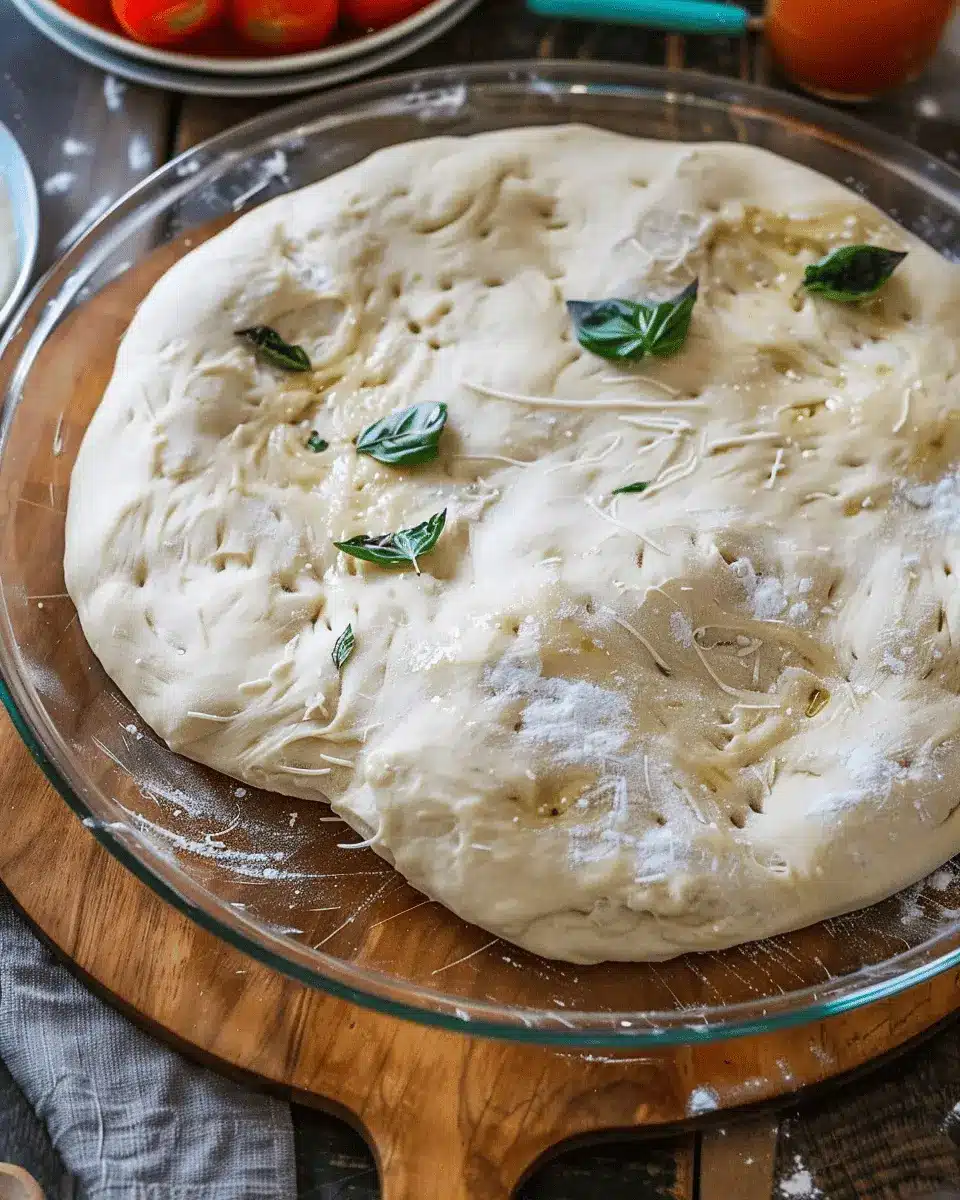
Ingredients for Homemade Pizza Dough
Creating the perfect homemade pizza dough is an art form, and it starts with a few essential ingredients that work harmoniously to bring your crust to life.
Essential ingredients for a perfect dough
- All-purpose flour: This is your foundation. Look for a high-protein flour for a chewier crust.
- Warm water: The magic elixir! It activates the yeast, so aiming for about 110°F is ideal.
- Active dry yeast: A small packet goes a long way, helping your dough rise and giving it that airy texture.
- Sugar: Just a pinch is all you need to feed the yeast and bring out a subtle sweetness.
- Salt: This balances the flavors and strengthens the dough, giving it structure.
- Olive oil: A touch of this adds richness and makes the dough easier to work with.
Optional ingredients for added flavor
Want to elevate your pizza experience? Consider these:
- Herbs: Dried oregano or basil can infuse your dough with aroma.
- Garlic powder: For an unexpected punch that complements toppings wonderfully.
- Whole wheat flour: Mix in a bit for added fiber and a nutty flavor.
Whether you’re a weekend warrior or a pizza-making pro, these ingredients will set you up for success.
For more insights on making the best dough, check out this expert guide on pizza-making. Getting the right balance of ingredients can truly make a difference!
Preparing Homemade Pizza Dough
Making homemade pizza dough can feel like a daunting task, but fear not! This guide will walk you through each step, ensuring you craft the perfect base for your pizza creations. Let’s get started!
Gather Your Ingredients
Before diving into the magic of dough-making, you’ll need to collect your ingredients. Here’s what you’ll need:
- 2 cups of all-purpose flour (plus extra for dusting)
- 1 packet (2 ¼ teaspoons) of active dry yeast
- ¾ cup of warm water (around 110°F)
- 1 tablespoon of olive oil
- 1 teaspoon of sugar (to activate the yeast)
- 1 teaspoon of salt
Make sure your pantry is stocked with these essentials. If you’re curious about flour types and their roles in dough, check out this resource on flour varieties for some extra insight.
Mix the Dry Ingredients
In a medium-sized bowl, combine your flour, salt, and sugar. Whisk these together thoroughly to ensure they are evenly distributed. This isn’t just about taste; the mixing process aerates the flour, which can help create a great texture in your dough later. If you want to ensure a consistent rise and flavor, using fresh yeast and quality flour can make all the difference.
Combine Wet Ingredients
In a separate bowl, combine your yeast and warm water. Stir gently and let it rest for about 5-10 minutes, allowing the yeast to activate and become frothy. This is a crucial step because it ensures your pizza dough rises properly. After the yeast mixture is bubbly and activated, add olive oil to it. You can read more about the role of oil in dough from this baking experts’ guide.
Form the Dough
Now that your wet and dry ingredients are prepped, it’s time to combine them. Gradually add the yeast mixture to the flour mixture, stirring with a wooden spoon or your hands until it comes together. If the dough is too sticky, sprinkle in a bit more flour; if it’s too dry, add a dash more water. Once it starts to form a ball, switch to kneading by hand on a floured surface for about 5-7 minutes until it’s smooth and elastic.
Allow the Dough to Rise
Place your kneaded dough into a lightly greased bowl, cover it with a damp cloth or plastic wrap, and let it rise in a warm place for about 1 hour. This process is essential for developing those lovely gluten strands, making your homemade pizza dough chewy and delightful. Remember, patience is a virtue, especially in baking!
Shape the Pizza Dough
After the dough has risen and doubled in size, it’s time to shape it into the perfect pizza base. Punch it down gently to release excess air, then turn it out onto a floured surface. Depending on your preference, divide the dough into two equal portions for two medium pizzas or keep it whole for one large pie. Roll or stretch it into your desired shape, keeping the edges slightly thicker for the crust.
And there you have it! You’ve successfully prepared some delicious homemade pizza dough. It’s an engaging process that not only fills your kitchen with the aromas of freshly baked bread but also gives you a sense of accomplishment. Now, unleash your creativity with your favorite toppings and enjoy your homemade creation.
If you’re looking for topping inspirations or beginner-friendly pizza recipes, check out Pizza Magazine for some tasty ideas. Happy baking!
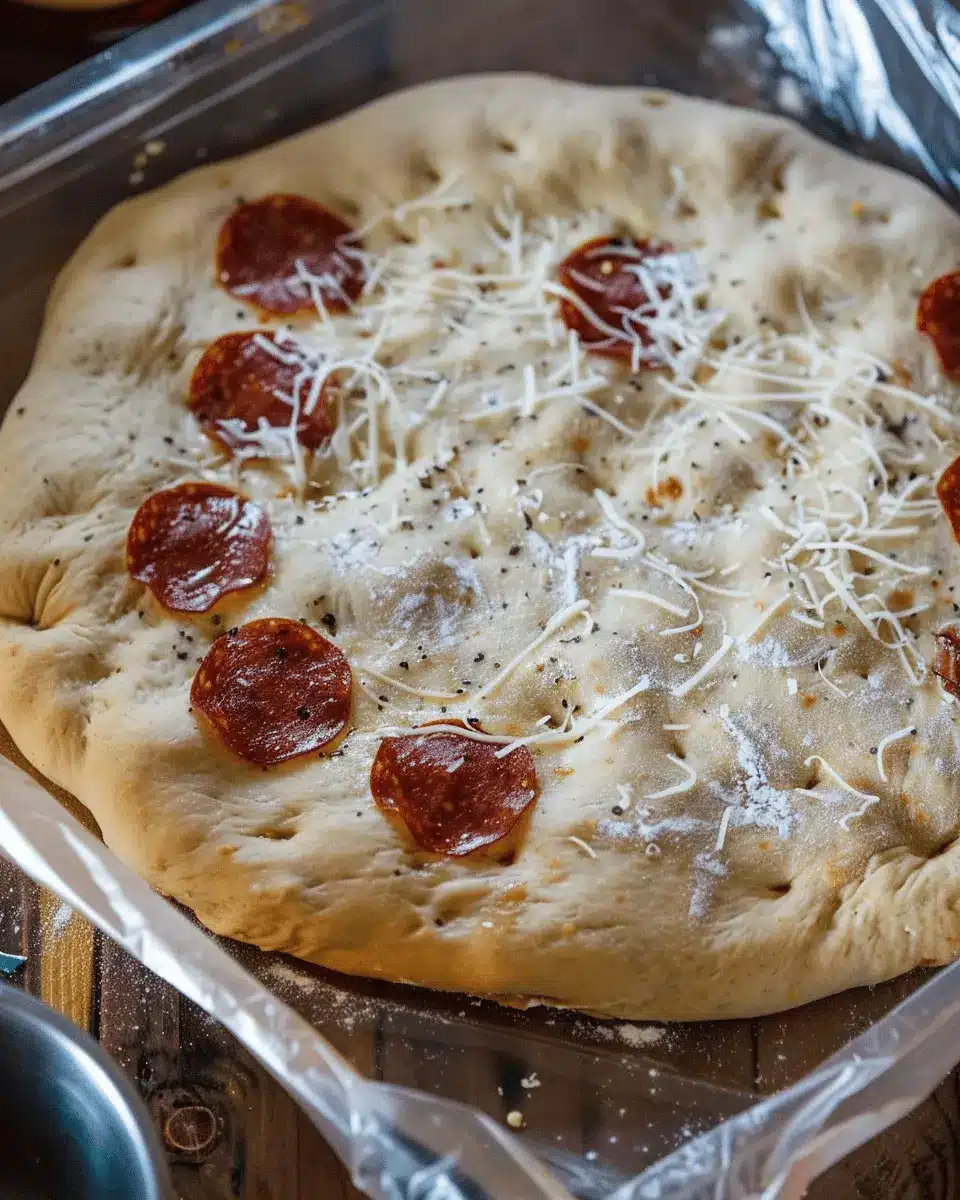
Variations on Homemade Pizza Dough
Creating your homemade pizza dough doesn’t have to be a one-size-fits-all endeavor. Let’s explore a couple of variations that can cater to your dietary preferences without sacrificing flavor!
Whole Wheat Pizza Dough
If you’re looking for a healthier take, whole wheat pizza dough is a fantastic option. This version adds extra fiber and nutrients, making your pizza not just delicious, but also wholesome. To make it, simply replace half of the all-purpose flour in your recipe with whole wheat flour.
- Tip: You might need to add a little more water, as whole wheat flour absorbs more moisture.
- Flavor Boost: Consider adding a teaspoon of garlic powder or herbs to the mix to elevate the taste.
Gluten-Free Pizza Dough Options
For those with gluten sensitivities, you can still enjoy a delightful pizza night by going gluten-free! A simple way to whip up homemade pizza dough is by using a blend of gluten-free flours such as almond flour, tapioca flour, or a store-bought gluten-free flour mix.
- Recipe Suggestion: Combine 1 ½ cups of gluten-free flour with 1 teaspoon of baking powder, 1 teaspoon of salt, and 1 tablespoon of olive oil, then gradually add water until you achieve your desired consistency.
- Expert Tip: Enjoy this gluten-free option while still keeping your toppings exciting. Try loading it up with fresh veggies for a colorful and nutritious meal!
Both variations allow you to customize your pizza experience while being mindful of health. For more detailed recipes and tips, check out sites like Serious Eats or King Arthur Baking. So grab your apron, and let’s get creative in the kitchen!
Cooking Tips for Homemade Pizza Dough
Best Practices for Kneading and Rising
Making your own homemade pizza dough is a rewarding process, but to get that perfect crust, kneading and rising are key. When kneading, don’t rush—aim for about 8 to 10 minutes of gentle stretching and folding. This develops gluten, giving your dough that desired chewiness. A little tip: if your dough feels too sticky, add a sprinkle of flour. Let it rise in a warm spot, ideally at room temperature. A double rise can really enhance flavor, so if you have time, let it rise twice!
Troubleshooting Common Dough Issues
Even seasoned cooks face challenges with homemade pizza dough. If your dough is too tough, you might have over-kneaded it. On the flip side, if it’s too sticky, adjust your flour as mentioned earlier. Other common issues include lack of rise—this could indicate old yeast, so always check the expiration. If your dough shrinks back while rolling, give it a moment to rest. Are you ready to dive into the world of pizza-making? For more detailed guidance, check out resources like King Arthur Baking for excellent tips and tricks.
By focusing on these key areas, you’ll be well on your way to creating that perfect pizza base. Enjoy the process!
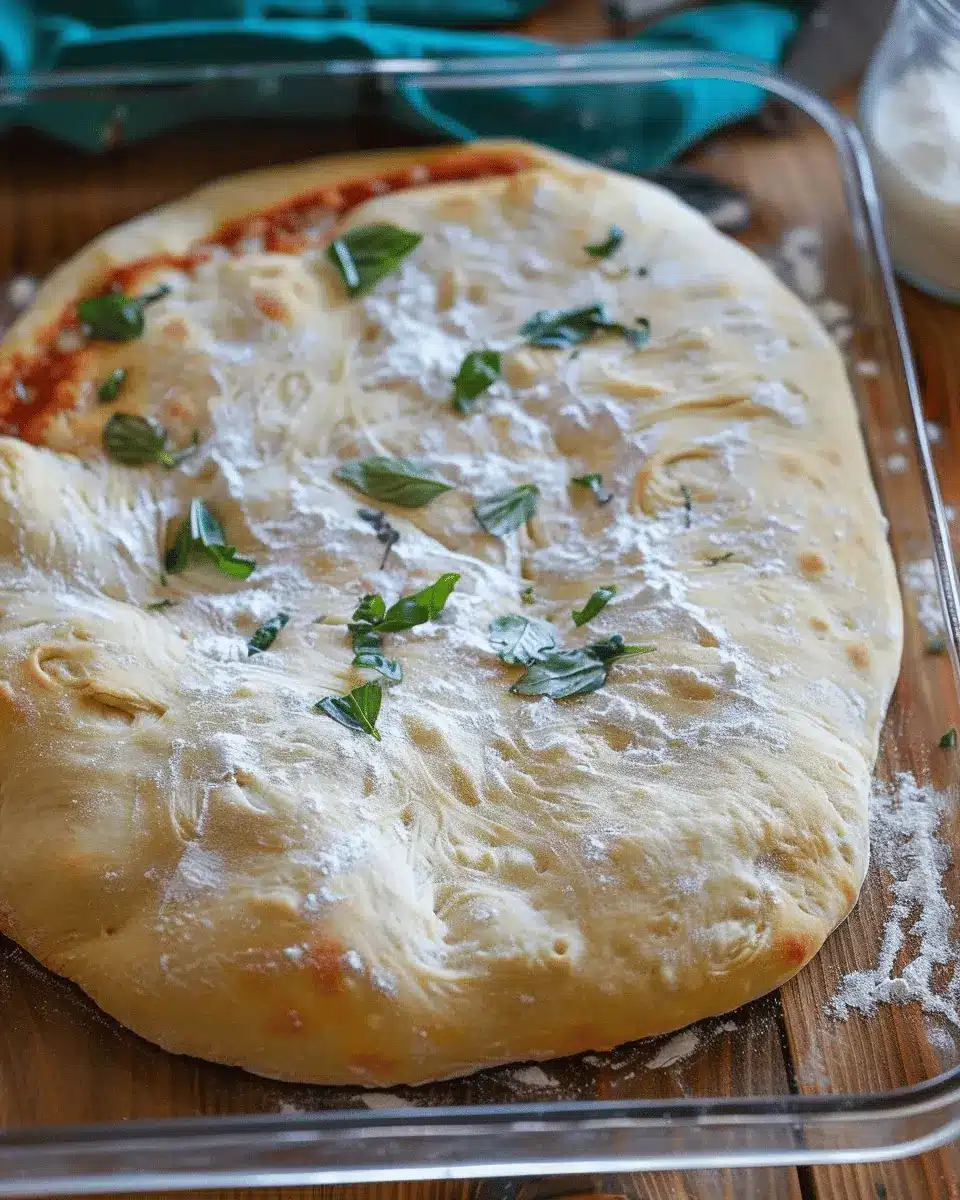
Serving suggestions for Homemade Pizza Dough
Classic Margherita Pizza
There’s nothing quite like a classic Margherita pizza to showcase your homemade pizza dough. Start with a simple base of tomato sauce, add fresh mozzarella, and finish with aromatic basil leaves. The key here is fresh ingredients; consider using heirloom tomatoes and locally sourced mozzarella if possible. As it bakes, the cheese melts beautifully, forming gooey pockets of flavor. For a hint of brightness, drizzle some extra virgin olive oil just before serving. This pizza isn’t just delicious; it feels like a warm hug on a plate.
Creative Topping Combinations
Feeling adventurous? Your homemade pizza dough is the perfect canvas for unique toppings!
- Thai Chicken Pizza: Use chicken ham, peanut sauce, mozzarella, and top with cilantro and peanuts.
- Mediterranean Delight: Layer on spinach, artichokes, feta cheese, and a drizzle of tzatziki for refreshing flavors.
- BBQ Turkey Bacon: Swap the traditional sauce for barbecue sauce, add turkey bacon, red onions, and cilantro for a smoky twist.
Experimenting with flavors can lead to delightful discoveries. Who knows? You might just create your next favorite dish! For more inspiration, check out this guide on pizza toppings to elevate your pizza game even further.
Time details for Homemade Pizza Dough
Preparation time
Making homemade pizza dough is a breeze, taking approximately 10 to 15 minutes in the kitchen. While it’s a short commitment, the result is totally worth it! You can easily measure your ingredients and mix them together for that perfect, soft dough.
Rising time
Now, this is where the magic happens. Allow the dough to rise for about 1 to 1.5 hours. This step is crucial as it gives the yeast time to work, resulting in that lovely airy texture we all crave. Remember, a warm environment helps—so find a cozy spot in your kitchen!
Total time
In total, you’re looking at roughly 1 hour and 45 minutes from start to finish. This includes preparation and rising time, making it perfect for a weekend cooking session. Once the dough is ready, the real fun begins—crafting your dream pizza! For more pizza inspiration, check out this guide to explore different toppings and sauce ideas.
Nutritional Information for Homemade Pizza Dough
When it comes to indulging in homemade pizza dough, understanding its nutritional content can help you enjoy it guilt-free!
Calories per serving
On average, a serving of homemade pizza dough (about 1 medium-sized pizza crust) contains approximately 210-300 calories. The calorie count will vary based on the size and thickness of your crust, so it’s essential to keep portion sizes in mind when planning your meal.
Other key nutritional facts
Beyond calories, here are some key nutritional components to consider:
- Carbohydrates: Homemade pizza dough typically has about 40-50 grams of carbs per serving, providing energy for your busy day.
- Protein: You can expect around 6-10 grams of protein, depending on the flour used.
- Fat: A standard recipe may contain 2-5 grams of fat, particularly if olive oil or butter is added.
By using whole wheat flour or incorporating healthy toppings, you can boost fiber and nutrient levels further. For more insights, check out this nutritional guide from the FDA!
FAQs about Homemade Pizza Dough
When diving into the world of homemade pizza dough, lots of questions can come up. Let’s tackle some of the most common inquiries!
How long can I store homemade pizza dough?
You can store your homemade pizza dough in the refrigerator for up to 3 days. Just make sure to wrap it tightly in plastic wrap or place it in an airtight container. If you’re feeling adventurous, letting the dough rest in the fridge can actually enhance its flavor as it ferments slowly. Just remember to bring it to room temperature before using, so it’s easier to roll out.
Can I freeze leftover pizza dough?
Absolutely! Freezing is a fantastic way to make your homemade pizza dough last longer. After it’s risen, shape it into a ball, dust it lightly with flour, and wrap it tightly in plastic wrap. Then place it in a freezer bag. Your dough can be frozen for up to 3 months. When you’re ready to use it, simply thaw it in the refrigerator overnight or for a few hours at room temperature.
What makes pizza dough chewy?
The chewiness of pizza dough primarily comes from the type of flour used. High-protein flours, like bread flour, are ideal because they create more gluten, resulting in that delightful chewy texture we love. Additionally, the kneading process helps develop gluten networks, so don’t skip that step! Incorporating hydration and allowing for a longer rise time can also contribute to a better texture.
If you want to read more about the science behind pizza dough, check out Serious Eats or King Arthur Baking. They delve into the art and methods of creating the perfect dough!
With these tips, you’re all set to become a homemade pizza master!
Conclusion on Homemade Pizza Dough
Making your own homemade pizza dough has so many benefits—it’s not just about taste! It allows you to customize your pizza to your liking, control the ingredients, and experiment with different flavors.
- Freshness: There’s nothing quite like the smell of fresh dough rising.
- Control: You know exactly what goes in, avoiding hidden additives.
- Creativity: Get adventurous with toppings and sauce combinations.
So, why not give it a go? You’ll impress your friends at gatherings and enjoy the satisfaction of creating something delicious from scratch. Plus, studies suggest that cooking can even boost mood and reduce stress. Check out this study for more! So grab your flour, and let’s make magic happen with homemade pizza dough!
Homemade Pizza Dough: The Best Recipe for Flavorful Family Nights
This homemade pizza dough recipe is perfect for creating delicious and flavorful family pizza nights.
- Prep Time: 15 minutes
- Cook Time: 15 minutes
- Total Time: 1 hour 30 minutes
- Yield: 2 pizzas 1x
- Category: Main Dish
- Method: Baking
- Cuisine: Italian
- Diet: Vegetarian
Ingredients
- 2 cups all-purpose flour
- 1 teaspoon sugar
- 1 teaspoon salt
- 1 teaspoon active dry yeast
- 3/4 cup warm water
- 2 tablespoons olive oil
Instructions
- In a bowl, combine warm water, sugar, and yeast. Allow it to activate for 5 minutes.
- Add flour, salt, and olive oil. Mix until a dough forms.
- Knead the dough on a floured surface for about 5 minutes.
- Place the dough in a greased bowl, cover, and let it rise for 1 hour.
- Preheat your oven to 475°F (245°C).
- Roll out the dough and place it on a pizza stone or baking sheet.
- Add your favorite toppings and bake for 12-15 minutes.
- Enjoy your homemade pizza!
Notes
- For a crispier crust, roll the dough thinner.
- Let the dough rest longer for enhanced flavor.
Nutrition
- Serving Size: 1 slice
- Calories: 250
- Sugar: 1g
- Sodium: 200mg
- Fat: 6g
- Saturated Fat: 1g
- Unsaturated Fat: 5g
- Trans Fat: 0g
- Carbohydrates: 40g
- Fiber: 2g
- Protein: 7g
- Cholesterol: 0mg
Keywords: Homemade Pizza Dough, Pizza, Family Recipe

